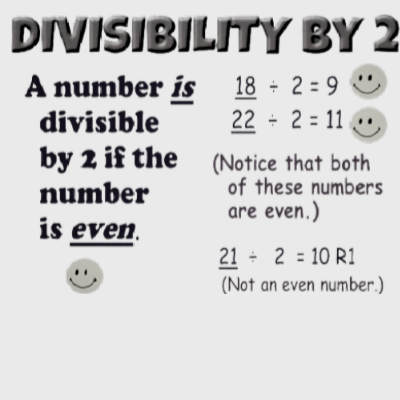Divisibility tests serve as invaluable tools in the mathematical space, thus, enabling individuals to determine whether one number is divisible by another without performing lengthy division. Notably, among the most commonly used tests are those for divisibility by 2, 3, 4, and 5, each offering unique insights into the properties of numbers. Therefore, in this comprehensive blog, we embark on a journey to explore these divisibility tests in detail, providing practical illustrations, solving problems, listing prime factors, and empowering learners to confidently apply these tests in various mathematical contexts. Hence, by the end of this exploration, you will emerge equipped with the knowledge and skills to master divisibility tests and unravel mathematical mysteries with precision and ease.
Learnerscamp is a dedicated platform designed to assist learners in comprehensively understanding mathematics and all mathematical operations. Through practical questions and clear explanations, Learnerscamp provides the essential resources to help you grasp the fundamentals of how to master divisibility tests. Moreover, Learnerscamp assists students in understanding geometric equations by providing educational resources such as how to find the area of a circle using interactive lessons, and practice problems. The website offers a structured approach to learning, helping students grasp fundamental concepts and apply them to solve geometric equations effectively. Additionally, learners can benefit from personalized feedback and progress tracking, enhancing their overall comprehension of geometry.
Mastering Divisibility Tests
Understanding Divisibility Test:
Divisibility is the property of one integer being exactly divisible by another integer without leaving a remainder. Thus, divisibility tests provide shortcuts to determine if a number is divisible by another number without performing division.
- Divisibility by 2:

A number is divisible by 2 if its last digit is even (0, 2, 4, 6, or 8). For example, 24 is divisible by 2 because its last digit is 4, while 31 is not divisible by 2 because its last digit is 1.
- Divisibility by 3:
A number is divisible by 3 if the sum of its digits is divisible by 3. For example, 123 is divisible by 3 because 1 + 2 + 3 = 6, which is divisible by 3, while 124 is not divisible by 3 because 1 + 2 + 4 = 7, which is not divisible by 3.
- Divisibility by 4:
A number is divisible by 4 if the number formed by its last two digits is divisible by 4. For example, 148 is divisible by 4 because 48 is divisible by 4, while 153 is not divisible by 4 because 53 is not divisible by 4.
- Divisibility by 5:
A number is divisible by 5 if its last digit is 0 or 5. For example, 135 is divisible by 5 because its last digit is 5, while 128 is not divisible by 5 because its last digit is 8.
Practical Illustrations in Divisibility Test:
- 1. Divisibility Test for 2:
Let’s test the divisibility of the number 468 by 2. Since the last digit is 8, which is even, 468 is divisible by 2.
- 2. Divisibility Test for 3:
Consider the number 315. The sum of its digits is \( 3 + 1 + 5 = 9 \), which is divisible by 3. Therefore, 315 is divisible by 3.
- 3. Divisibility Test for 4:
Let’s examine the number 824. Since the number formed by its last two digits, 24, is divisible by 4, 824 is divisible by 4.
- 4. Divisibility Test for 5:
Take the number 450. Since the last digit is 0, 450 is divisible by 5.
Solving Problems Involving Divisibility Tests:
Let’s tackle some word problems involving divisibility tests:
- 1. Problem 1:
Is 376 divisible by 4?
Solution: The number formed by its last two digits is 76, which is not divisible by 4. Therefore, 376 is not divisible by 4.
- 2. Problem 2:
Determine if 1,028 is divisible by 2.
Solution: Since the last digit is 8, 1,028 is divisible by 2.
- Listing Prime Factors:
Prime factors are the prime numbers that multiply together to give the original number. For example, the prime factors of 24 are 2 and 3, as 2 x 2 x 2 x 3 = 24.
Mastering divisibility tests for numbers 2, 3, 4, and 5 is essential for understanding the properties and relationships of numbers. Therefore, by learning these tests, solving problems, listing prime factors, and exploring practical illustrations, individuals enhance their mathematical fluency and problem-solving skills. So, let’s embrace the power of divisibility tests, armed with the knowledge and skills to navigate the world of mathematics with confidence and precision.
Thus, the next time you encounter a number, remember to apply divisibility tests to unravel its properties and relationships, empowering yourself to tackle mathematical challenges with ease and proficiency.








